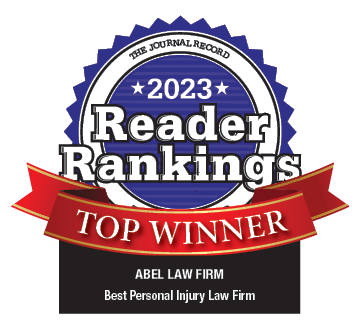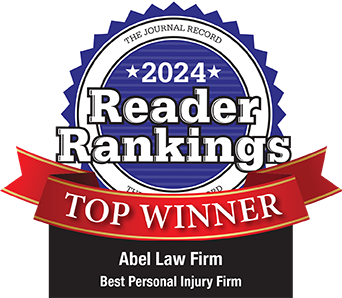“Open and obvious” danger in premises liability cases hinges on whether – from an objective view — a premises owner knows or should know of some hidden hazard to trigger a duty to warn and whether an invitee should recognize the peril. The grey area centers on what is an “obvious” danger.
Affirmative Duty to Invitees
Invitees — those with either an express or implied invitation to come onto the property for the mutual benefit of the visitor and the owner — are owed the “active, affirmative or positive” duty of reasonable or ordinary care for their safety. St. Louis-San Francisco Ry. Co. v. Williams, 1936 OK 73, 56 P.2d 815, 816. Visitors may include people “… of varying ages and degrees of physical infirmity”. Foster v. Harding, 1967 OK 46, 426 P.2d 355, 361. Reasonable care “…does not have a fixed meaning. It is a variable concept, to be viewed as shifting with the circumstances of each case.” Brown v. Nicholson, 1997 OK 32, 935 P.2d 319, 322. The duty includes disclosing defects known to the owners but unlikely to be discovered by invitees. Id. at 321. It is a duty to warn only of problems “… in the nature of hidden dangers, traps, snares, pitfalls and the like …”. Harrod v. Baggett, 1966 OK 171, 418 P.2d 652, 659. So, what is “hidden”?
Hidden Dangers May Be in Sight
Under Oklahoma law it is not a question of whether some object is open and obvious, but whether the hazard or danger is open and obvious. An “observable” object or condition is not necessarily obvious: “All of the circumstances must be examined to determine whether a particular condition is open and obvious to the plaintiff or not.” Zagal v. Truckstops Corp. of America., 1997 OK 75, 948 P.2d 273, 275 (when customer tripped over large cardboard box near truckstop entrance, reasonable minds could differ as to whether it was a “concealed danger”); see also, Nider v. Republic Parking, Inc., 2007 OK CIV APP 95, 169 P.3d 738, 747 (slippery ramp).
Deceptively Innocent Appearance
A “hidden danger” may present “… a deceptively innocent appearance of safety which masks a hidden danger.” Williams v. Tulsa Motels, 1998 OK 42, 958 P.2d 1282, 1287 (dissent, n. 10). As defined in Henryetta Construction Co. v. Harris, 1965 OK 88, 408 P.2d 522, 531: “A hidden danger … need not be totally or partially obscured from vision or withdrawn from sight; most generally, the phrase is used to denote a condition presenting a deceptively innocent appearance of safety ‘which cloaks a reality of danger’”. In Brown v. Nicholson, when the plaintiff sued for injuries in a fall on a parking-garage ramp, the court found genuine issues of material fact as to whether the slippery surface partly protected by weather stripping had a deceptively innocent appearance. Brown, 935 P.2d at 323. In Phelps v. Hotel Management Inc., 1996 OK 114, 925 P.2d 891, 894, a jury would have to decide whether the position of a very visible glass bowl, filled with pumpkins and extending over a seating area, made it appear harmless. In Jack Healey Linen Service Co. v. Travis, 1967 OK 213, 434 P.2d 924, the court said a large puddle of soapy water in which the plaintiff slipped may have presented a deceptively innocent appearance. Id. A hidden danger is not necessarily totally out of sight. Id. at 927. “There exists no fixed rule for determining whether or not a defect in the premises is in the nature of a trap.” Id. In Rogers v. Hennessee, 1979 OK 138, 602 P.2d 1033, 1034, different conclusions could have been reached about whether a puddle of water that caused a student beautician’s fall had a deceptively innocent appearance. In Brown v. Alliance Real Estate Group, 1999 OK 7, 976 P.2d 1043, a woman slipped on ice at the entrance of a real estate office where another had slipped earlier. The weather was clear and cold, the sidewalk appeared dry and the hazard was “black ice”, triggering the realtor’s duty to warn. Id. at 1045.
Distractions and Inattention
A danger may be hidden because the injured party was understandably distracted by other things. In Henryetta Construction Co., a jury found an open drainage inlet on a bridge into which a highway inspector fell was a hidden danger, even though the plaintiff admitted he wasn’t looking where he was going. Henryetta, 408 P.2d at 531. The court quoted CJS: “’Circumstances may exist under which forgetfulness or inattention to a known danger may be consistent with the exercise of ordinary care, as where the situation requires one to give undivided attention to other matters …’” Id. at 528. “…[O]penness … depends on the entrant’s ability to perceive, appraise and appreciate the presence of danger at a critical point in time.” Id. at 531 (n. 5). “Plaintiff’s familiarity with the general physical condition which may be responsible for her injury does not of itself operate to transform the offending defect into an apparent and obvious hazard. . . . [A] particular risk from the known defect could nevertheless, under the circumstances of a given occasion, be incapable of appreciation.” Jack Healey at 928. In Woodall v. Chandler Material Co., 1986 OK 4, 716 P.2d 652, 654, the court should have given a “hidden defect” instruction for a man injured when he fell into a deep, unguarded pit as he walked through a darkened room. “’What may be apparent in the daytime may become a pitfall in the darkness or when the light is dim.’” Id. The court in Nider, 169 P.3d at 746, quoted from a comment to Restatement (Second) of Torts: “[T]he invitee’s attention may be distracted, so that he will not discover what is obvious, or will forget what he has discovered, or fail to protect himself …. [or] where the [owner] has reason to expect that the invitee will proceed to encounter the known or obvious danger because to a reasonable man in his position the advantages of doing so would outweigh the apparent risk.” The plaintiff in that case may have been distracted by “some reasonable cause” so she did not notice a deteriorating skid surface. Id.
Duty to Provide Safe Ingress or Egress
As stated in Pruitt v. Timme, 1959 OK 276, 349 P.2d 4, 5-6: “Generally, an invitation to enter premises carries with it the duty toward the persons invited to provide reasonably safe means of ingress and egress, and to provide reasonably safe passages to and from such places as are included within the scope of the invitation.” See also, Thomas v. E-Z Mart Stores, Inc., 2004 OK 82, 102 P.3d 133, 138. The court reiterated in Jack Healey, 434 P.2d at 928: “Where an invitee had been negligently misled into a reasonable belief that a passageway or door is an appropriate means of ingress or egress, he is entitled to the protection due his status while using such passageway or door.” In Nider, the court noted invitees could be expected to use the ramp on which the plaintiff fell as ingress and egress from a garage. Nider, 169 P.3d at 745. In Foster, 426 P.2d at 361, in which a woman fell down a dark mausoleum stairway when she did not turn on the light, the court found jury questions regarding the condition of mausoleum steps and the defendant’s duty.
Distractions while Shopping
Store owners have a duty to shoppers to maintain as safe a shopping environment as possible, taking into account self-service and shopping habits of people. Lingerfelt v. Winn-Dixie Texas, Inc., 1982 OK 44, 645 P.2d 485, 488. Business invitees have the right to assume it is reasonably safe to walk through the aisles. See, J. J. Newberry Co. v. Lancaster, 1964 OK 21, 391 P.2d 224, 228 (merchandise in the store created a circumstance where plaintiff was looking upward and tripped on a stool in the aisle). An object “obvious and not dangerous of itself” may become dangerous because of a storekeeper’s acts or omissions. Id. In Hansen v. Academy, Ltd., L.P., 2006 OK CIV APP 63, 136 P.3d 725, 726, a genuine issue of material fact existed as to whether the tongue of a boat trailer over which the plaintiff fell was open and obvious when it was “…. visible but unseen due to the owner-created distraction…” (an inflatable shark placed in the boat by the defendant’s employees). In Roper v. Mercy Health Center, 1995 OK 82, 903 P.2d 314, 315, the court found reasonable minds could differ on whether, because of heavy pedestrian traffic, a light fixture six inches above the surface of the ground could be a hidden danger. Similarly, in Spirgis v. Circle K. Stores Inc., 1987 OK CIV APP 45, 743 P.2d 682, when a man stepped into a pothole in the parking lot, it could have been a latent defect because “foreseeable traffic” might have diverted his attention. Id. at 685.
A Matter of Law
The Oklahoma Supreme Court has found some hazards to be “open and obvious” as a matter of law, but it is instructive to review the facts in such cases: Absence of handrails: Reed v. First Nat’l Bank of Wagoner, 1965 OK 114, 405 P.2d 10; Pruitt, 349 P.2d at 6; Harrod, 418 P.2d at 655; Building components: C. R. Anthony Co. v. Million, 1967 OK 231, 435 P.2d 116 (store awning); Pickens v. Tulsa Metropolitan Ministry, 1997 OK 152, 951 P.2d 1079 (retaining wall); Safeway Stores v. McCoy, 1962 OK 194, 376 P.2d 285 (curb); Hull v. Newman Memorial Hospital Inc., 1963 OK 46, 379 P.2d 701 (2-inch drop in floor); Darkness: Harrod, 418 P.2d at 656 (stairs); C.R. Anthony Co. v. Williams, 1939 OK 316, 94 P.2d 836 (concrete steps); Pruitt, 349 P.2d at 6 (stairway); Defendant’s lack of knowledge: Rogers v. Hennessee, 602 P.2d 1033 (no evidence defendant knew of hazard); Heater: Skelton v. Sinclair Refining Co., 1962 OK 154, 375 P.2d 948 (wall heater); Invitee with superior knowledge: Rogers v. Cato Oil & Grease Co., 1964 OK 152, 396 P.2d 1000 (invitee with fire-fighting expertise); Sutherland v. Saint Francis Hospital, Inc., 1979 OK 18, 595 P.2d 780, 783 (plaintiff in better position to know if stool defective); Weldon v. Dunn, 1998 OK 80, 962 P.2d 1273, 1277 (student knew chair sometimes malfunctioned; but see, strong dissent); Large items: Safeway Stores, Inc. v. Sanders, 1962 OK 162, 372 P.2d 1021 (lawn chairs in wide aisle); Moving objects: Nicholson v. Tacker, 1973 OK 75, 512 P.2d 156 (floating dock); Natural phenomena: Buck v. Del City Apartments, Inc., 1967 OK 81, 431 P.2d 360 (natural ice and snow); Dover v. W.H. Braum Inc., 2005 OK 22, 111 P.3d 243 (natural ice); McClendon v. McCall, 1971 OK 123, 489 P.2d 756 (natural ice); Water: Kastning v. Melvin Simon & Assoc. Inc., 1994 OK 68, 76 P.2d 239 (puddle in front of toilet).
Jury Question
In sum, “If … conflicting inferences may be drawn … as to whether the offending hazard did have a ‘deceptively innocent appearance’, or its extent could not be anticipated, neither the trial court nor this court may declare that the peril was obvious and apparent and that recovery is precluded as a matter of law. The question is one for the jury… .” Jack Healey, 434 P.2d at 928.
–Lynn Brusin Mares


